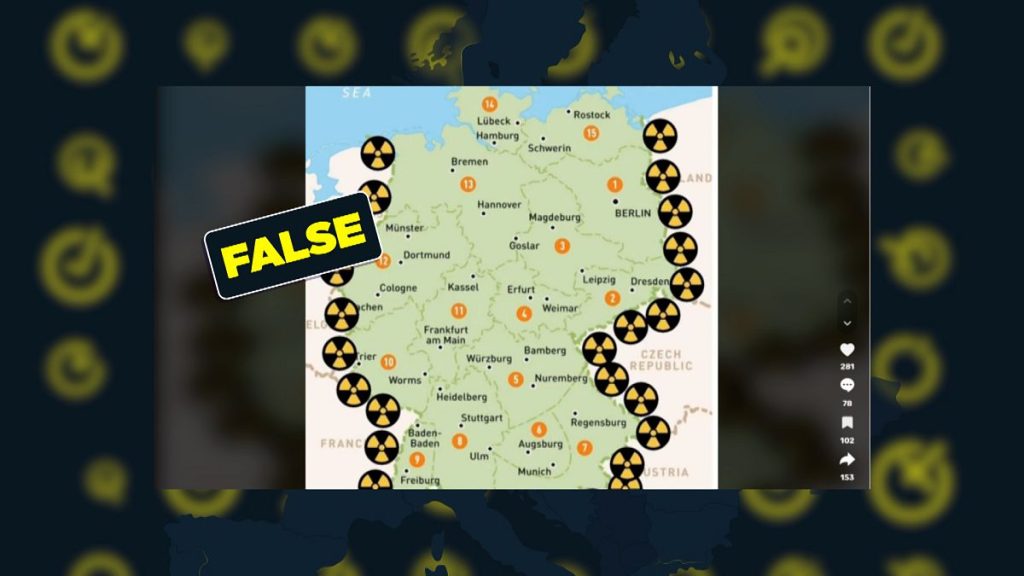An old and misleading map showing Germany’s borders lined with 30 nuclear power plants has resurfaced online, sparking discussions about the country’s energy future. The map suggests that Germany’s neighbors, including the Netherlands, Belgium, Luxembourg, France, Switzerland, Austria, the Czech Republic, Poland, and Denmark, have numerous operable nuclear plants. However, the reality is quite different, as many of these countries do not have any nuclear plants at all, and those that do are not clustered along Germany’s borders as the map indicates. This map, created by Nucleareurope, a Brussels-based trade association for the nuclear energy industry, only shows operable plants, with France leading Europe with 56 reactors, followed by Russia, Ukraine, the UK, and Spain.
While some of Germany’s neighbors, like Belgium and Switzerland, do have operable nuclear plants, they are not as plentiful as the misleading map suggests. Germany itself completed its nuclear phase-out in April 2023 when the country’s last nuclear power plants were shut down as part of a plan approved in 2011. Despite the shutdown of its own nuclear plants, some have drawn connections between the map and Germany’s energy policy, speculating that the country may fall behind in nuclear energy production as its neighbors continue to operate their plants. However, this map does not accurately reflect the current situation in Europe, where the distribution of nuclear power plants is more scattered and not concentrated along Germany’s borders as the map suggests.
The misinformation surrounding Germany’s nuclear energy landscape has sparked debate and speculation on social media platforms like TikTok and Facebook. Posts sharing the misleading map have generated comments suggesting that Germany’s neighbors are forging ahead in nuclear energy production, while Berlin falls behind. However, the reality is that while some neighboring countries do have nuclear reactors in operation, they are not as numerous or as strategically positioned as the map implies. France leads the way in Europe with the highest number of operable nuclear reactors, followed by other countries like Russia, Ukraine, the UK, and Spain.
As discussions continue about the future of nuclear energy in Germany and Europe, it is important to separate fact from fiction. While the old map may give the impression that Germany’s neighbors are more advanced in nuclear energy production, the reality is that the distribution of nuclear power plants in Europe is more varied and spread out. Germany’s decision to phase out nuclear power plants as part of its energy transition plan reflects a shifting approach to energy production and sustainability. As the country looks to alternative sources of energy, including renewables like wind and solar power, the debate around nuclear energy continues to evolve. It is essential to consider accurate and up-to-date information when discussing topics as complex and critical as nuclear energy policy.


